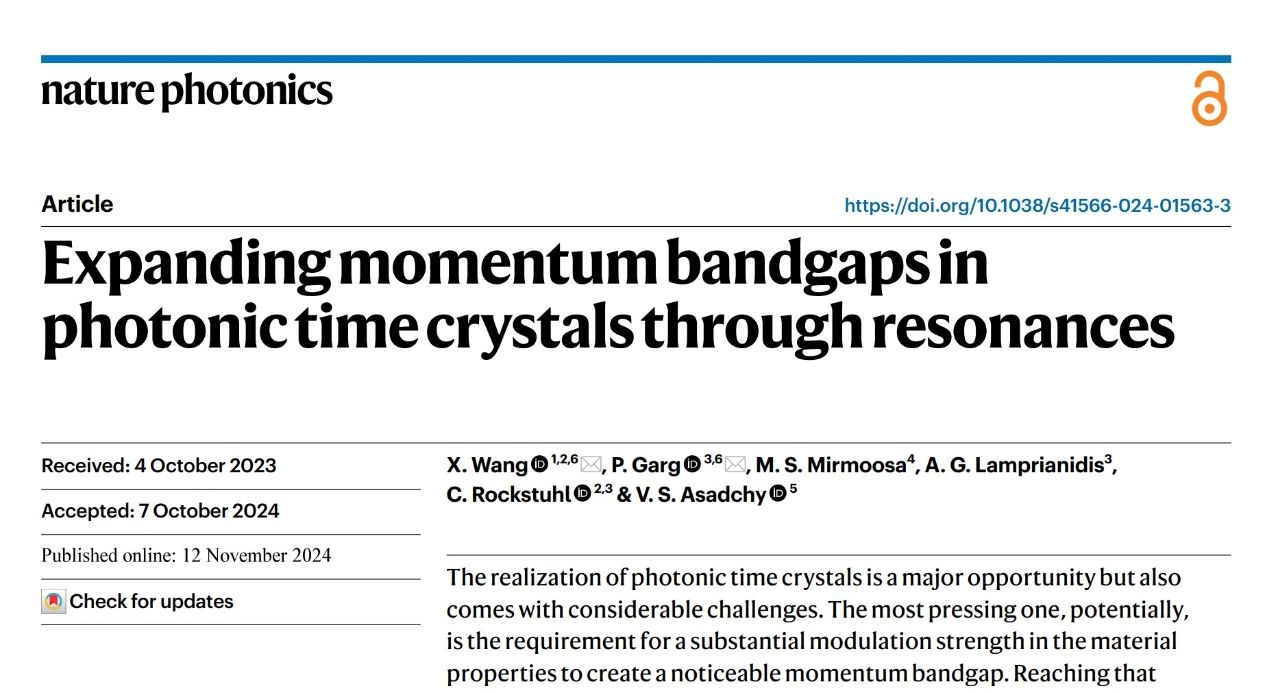
Recently, the HEU International Joint Research Center for Nanooptics and Metamaterials made significant progress in the field of photonic time crystals through collaboration with teams from Aalto University (Finland), the University of Eastern Finland, and Karlsruhe Institute of Technology (Germany). Theoretical evidence now confirms that by periodically modulating materials with resonant properties, an infinitely wide momentum bandgap can be achieved.
This breakthrough exponentially amplifies all light wave modes in the momentum spectrum, solving the long-standing issue of the limited momentum bandgap in photonic time crystals. The research was published on November 12th in Nature Photonics, a leading international journal, under the title "Expanding Momentum Bandmaps in Photonic Time Crystals Through Resonances." This discovery is expected to reduce the reliance on high-power modulation in photonic time crystals.

Figure: Illustration of a photonic time crystal based on a silicon nanosphere array metasurface.
A photonic time crystal is a unique optical structure that changes periodically over time and can amplify light energy in a manner similar to a laser. This structure creates a "momentum bandgap," which exponentially amplifies the energy of light within the bandgap over time. Previous studies suggested that creating such a bandgap required substantial energy, potentially damaging the material. However, this work demonstrates that if materials can generate electromagnetic resonance autonomously, only a small amount of energy is needed to create the bandgap. This provides a new approach for developing more efficient lasers, directional light sources, and advanced sensors.
Professor WANG Xuchen of HEU is the first author and corresponding author of the paper. Dr. Puneet Garg from Karlsruhe Institute of Technology is the co-first author and corresponding author. Harbin Engineering University is both the first and corresponding institution. The study is supported by The Fundamental Research Funds for the Central Universities.
The International Joint Research Center for Nanooptics and Metamaterials aims to build an international innovation team focused on multi-physics field metamaterials and device applications. The center explores new collaboration paradigms with overseas universities, promotes international education and technology talent development, and works to empower new quality productivity. The center conducts both fundamental and applied research in areas such as energy enrichment and transmission in multi-physics fields, and nano-optoelectronic energy devices. It has achieved a series of innovative results and, with HEU as the leading institution, has published over 50 papers in top international journals such as Nature Photonics, Nature Materials, Nature Nanotechnology, Nature Communications, and Physical Review Letters.
Nature Photonics, a sub-journal of Nature published by Springer Nature Group, is ranked as the top journal in the field of optics and has an impact factor of 39.728. It is widely recognized as one of the most prestigious journals in the international optics community.
Paper link: https://www.nature.com/articles/s41566-024-01563-3
